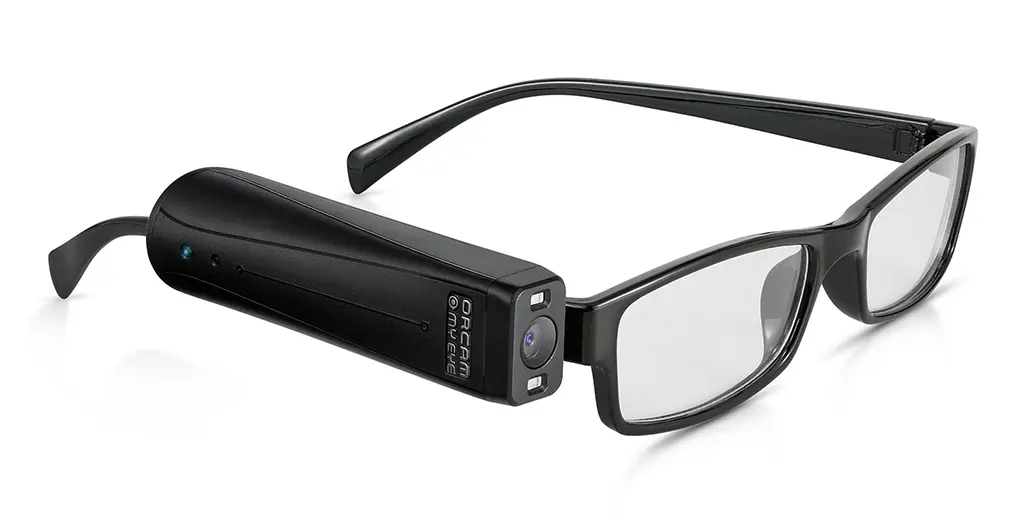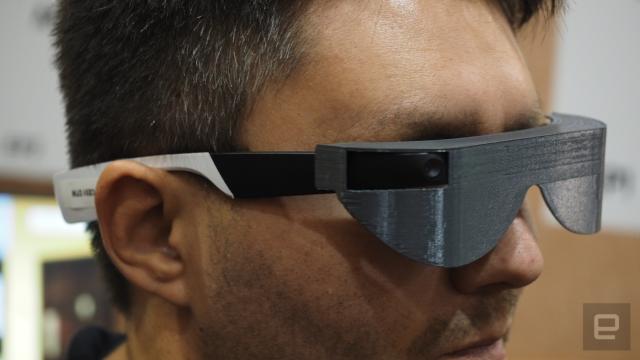OCR Devices for the Blind: Breaking Barriers with Optical Character Recognition
OCR Devices for the Blind: Breaking Barriers with Optical Character Recognition
Blog Article
Enhancing Access Via Assistive Modern Technology for the Blind
The combination of assistive innovation for the blind stands for a crucial advancement in ease of access, basically modifying just how individuals browse their atmospheres and engage with culture. As we check out the diverse types of assistive gadgets and their tangible impacts on daily living, it becomes essential to analyze just how ongoing technological advancements are reshaping the landscape of support for the blind area.
Summary of Assistive Modern Technology
Assistive innovation refers to an array of tools and software program designed to boost the capabilities of individuals with disabilities, consisting of those that are visually impaired or blind. This technology plays an important function in advertising independence and boosting the lifestyle for individuals. By supplying alternative techniques for accessing details and performing day-to-day jobs, assistive modern technology equips individuals to navigate their environments extra effectively.
The development and implementation of assistive modern technology welcome a variety of concepts targeted at fostering accessibility. These principles include user-centered layout, which prioritizes the requirements and choices of the individual, and the assimilation of technology into daily activities. Such developments make sure that assistive gadgets are not just practical however simple and also user-friendly to utilize.
Additionally, assistive technology incorporates a diverse spectrum of services, from low-tech options like magnifiers to state-of-the-art developments such as display viewers and Braille displays. The continuous evolution of this field is driven by the demand to attend to the unique challenges encountered by individuals with visual problems (Wearable technology for low vision). As modern technology proceeds to breakthrough, the possibility for boosting availability and advertising inclusivity continues to be encouraging, inevitably adding to a more equitable society

Types of Assistive Tools
Various sorts of assistive gadgets are readily available to support individuals who are blind or visually damaged, each made to address particular demands and difficulties. These gadgets can be extensively classified right into three main kinds: low-tech, mid-tech, and modern remedies.
Low-tech devices consist of items such as magnifiers, Braille tags, and responsive maps. These are reasonably basic tools that boost the customer's capability to interact with their atmosphere without requiring complex technology.
Mid-tech tools frequently entail advanced features, such as digital magnifiers and mobile Braille note-takers. These tools can use capabilities like speech output, permitting users to access details much more successfully.

Influence On Daily Living
The schedule of different assistive gadgets considerably enhances the lifestyle for individuals that are aesthetically impaired or blind, affecting their daily living in profound ways. By incorporating modern technologies such as screen visitors, Braille shows, and audio summary solutions right into their routines, individuals get higher freedom and freedom. These devices help with access to details, making it possible for individuals to perform daily tasks, such as reviewing e-mails, navigating public areas, and enjoying media web content.
Furthermore, assistive tools encourage people to involve more fully in social interactions and neighborhood tasks. The capacity to use smartphones furnished with access functions permits seamless interaction and link with others. This connectivity promotes a sense of belonging and lowers sensations of isolation.
In expert setups, assistive technology supports efficiency by permitting people to full job jobs effectively. Devices like voice acknowledgment software program and specialized magnifying tools allow users to take part in the workforce on equivalent ground with their sighted peers.

Developments in Technology
Recent technical innovations have substantially changed the landscape of tools offered for people who are visually impaired or blind. The combination of expert system (AI) and maker learning has actually given surge to applications that improve navigation and things recognition. For instance, mobile phone applications can currently utilize AI to recognize and describe surroundings in real-time, providing users with beneficial contextual information.
Additionally, innovations in haptic modern technology have actually caused the growth of wise walking sticks outfitted with sensing units that identify obstacles and supply tactile feedback. This empowers customers to browse their atmosphere with boosted confidence and self-reliance. Technologies in text-to-speech software application and braille display screens have actually enhanced the availability of electronic web content, allowing for smooth interaction with numerous media.
Wearable innovations, such as wise glasses, are additionally making strides in helping visual problems. These tools can supply augmented reality experiences, overlaying crucial details onto the customer's field of vision. Collectively, these improvements not just improve the quality of life for people who are blind but also promote better addition in culture. As innovation remains to advance, the possibility for a lot more transformative tools continues to be coming up.
Future Trends and Innovations
As modern technology swiftly progresses, the future of assistive devices for people who are blind holds immense pledge. Technologies in artificial intelligence (AI) and artificial intelligence are positioned to reinvent the find out here method blind customers engage with their settings. For example, AI-driven applications are being created to boost object recognition, enabling users to identify and navigate their surroundings with higher simplicity and accuracy.
Additionally, developments in haptic feedback modern technology are allowing the development of tactile maps and navigating aids that give real-time details through touch. These advancements not only boost flexibility however additionally foster freedom. Additionally, wearable tools geared up with increased reality (AR) functions are arising, supplying individuals aesthetic information with sound summaries, thereby linking the void between the digital and physical globes.
Additionally, the combination of smart home technology offers brand-new possibilities for access, enabling people to control their living settings through voice commands or mobile phone applications. As cooperation in between tech developers and the blind neighborhood continues, the emphasis on user-centered layout will certainly guarantee that future advancements are tailored to fulfill the one-of-a-kind needs of this populace look at more info (Wearable technology for low vision). The trajectory of assistive innovation assures a more inclusive and empowering future for individuals that are blind
Conclusion
To conclude, assistive innovation plays an essential duty in boosting availability for individuals with aesthetic problems. The varied array of devices, consisting of display readers and wise walking canes, significantly boosts day-to-day living and promotes self-reliance. Constant innovations in modern technology and user-centered style guarantee that these tools cater successfully to the unique needs of the blind neighborhood. As developments progress, raised inclusivity and empowerment can be expected, inevitably enhancing the lifestyle for those influenced by visual impairments.
The combination of assistive innovation for the blind stands for a pivotal innovation these details in ease of access, basically changing exactly how individuals navigate their atmospheres and engage with society.Assistive innovation refers to a range of gadgets and software application designed to enhance the abilities of individuals with specials needs, consisting of those that are blind or visually impaired. Wearable technology for low vision.As technology swiftly proceeds, the future of assistive tools for people who are blind holds enormous guarantee. The trajectory of assistive modern technology promises an extra inclusive and empowering future for individuals that are blind
In conclusion, assistive modern technology plays a vital duty in enhancing accessibility for individuals with visual impairments.
Report this page